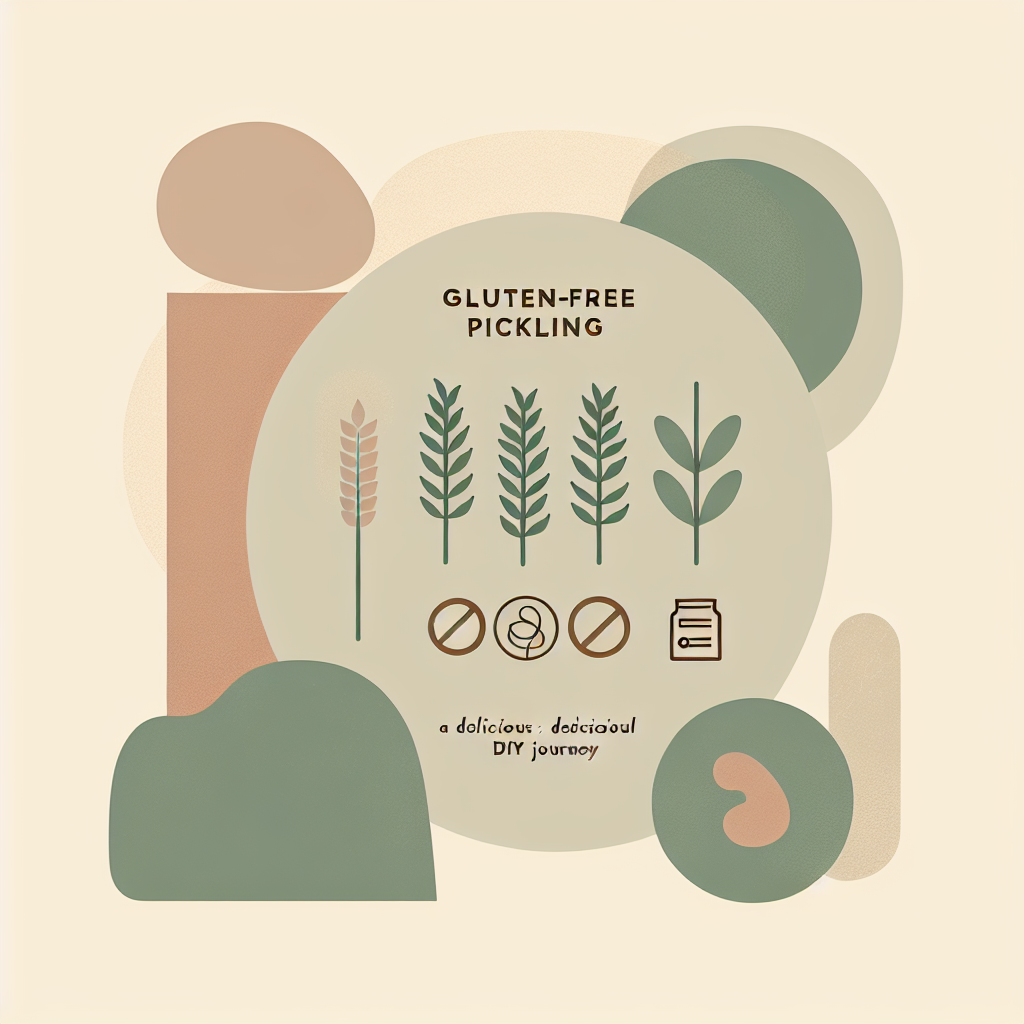Growing up, I remember my grandmother throwing the most incredible parties. She could whip out a lavish spread that would feed an army, but my favorite part, the pièce de résistance, was always her colorful jar of homemade pickles sitting proudly in the middle of the dining table. Crunchy, tangy, and ever so slightly spicy – they were a perfect accompaniment to every dish. If there was ever a party without those pickles, it would feel like a party without balloons. Now, living gluten-free means I am even more obsessed with pickling. Not only do these delightful jarred treats add a pop of color and a burst of flavor to any meal, they also adhere to our requirements of being 100% gluten-free!
This brings us to our topic today – a dive into the wonderful world of pickling. And, of course, how to make it gluten-free and fabulous. If you’re a fan of pickles but haven’t ventured into making them yourself yet, or if you just love a good food DIY, this post is for you.
Let’s start with the basics: what is pickling? It’s a method of preserving food by fermenting it in brine or vinegar. This process can increase the lifespan of your fruits and vegetables, while also enhancing their flavor. Traditionally, pickling involved simply adding your fruit or veggies to the pickling solution and allowing the natural fermentation process to work its magic. Today, however, with our extensive knowledge of food science, there are numerous methods and variations to pickling you can experiment with.
Perhaps the best reason to pickle your own vegetables: it’s gluten-free! While store-bought pickles are usually gluten-free, some brands may add malt vinegar (a no-no for gluten-free eaters) or other gluten-containing additives. So, making your own pickles gives you the control to ensure that every ingredient used is safe for consumption.
The first step to making your own pickles is obviously choosing your pickling medium. Vegetables like cucumbers, cauliflower, and radishes are popular choices due to their sturdy texture and relatively neutral flavors. However, don’t feel confined to just these options. From carrots and beets to fruits like peaches and cherries, you can pickle nearly anything you set your heart on.
One advantage of pickling your own vegetables is that you can control the flavors and the degree of pickling. Remember that vinegar is a must-have for pickling, but which vinegar you choose can have a big impact. White vinegar, cider vinegar, and red or white wine vinegar are all gluten-free options and can bring various tastes to your pickles. Experiment and find which ones you love the most!
Next are the spices and herbs that help enhance the pickling process. These can include mustard seeds, peppercorns, and herbs such as dill. For a spicy kick, try adding a few slices of fresh jalapenos or a touch of crushed red pepper. If you prefer a sweeter profile, think along the lines of cinnamon sticks, cloves, or a bit of sugar.
Now, let’s dive into the world of brining. For those who aren’t familiar with pickling, you might be wondering what role brining plays. Essentially, brining is a solution of salt and water, and this salty environment encourages good bacteria to grow on the vegetables, which then turn their natural sugars into lactic acid — a form of fermentation. In one of my earlier posts about essential gluten-free food science facts, I mentioned how important these healthy bacteria are for our gut health.
This brings us to a delightful subtopic: fermented pickles! If you’ve heard of probiotics – the valuable bacteria that nourish our gut health – you already have an inkling of where I’m going with this. Fermentation is an easy way to incorporate these probiotics into your diet. A word of caution though, ensure you’re fermenting food under right conditions; you desire fermentation not food spoilage!
If you’re looking to win the “hostess with the mostess” title at your next event, why not set up a gluten-free pickle bar? This provides a healthy, interactive, and completely gluten-free addition to your food lineup. If this idea tickles your fancy, check out my previous blog on creating the ultimate gluten-free party spread. The pickle varieties can be endless, catering to the taste buds of each of your guests.
My favorite type of pickle? A dense and crunchy pickled cucumber soaked in garlic and dill-infused brine. With its tongue-tickling flavors, it’s the gluten-free star of just about every meal.
Remember, making pickles is not a complicated process, and it leaves ample room for creativity. This kitchen experiment could transform you into your very own pickle connoisseur! Refer to this post whenever you need guidance, and don’t forget to have fun with it. After all, creating delicious and healthy gluten-free recipes is a journey best enjoyed, not rushed.
Happy pickling, my gluten-free friends!
**Category: Baking & Cooking Science**.


